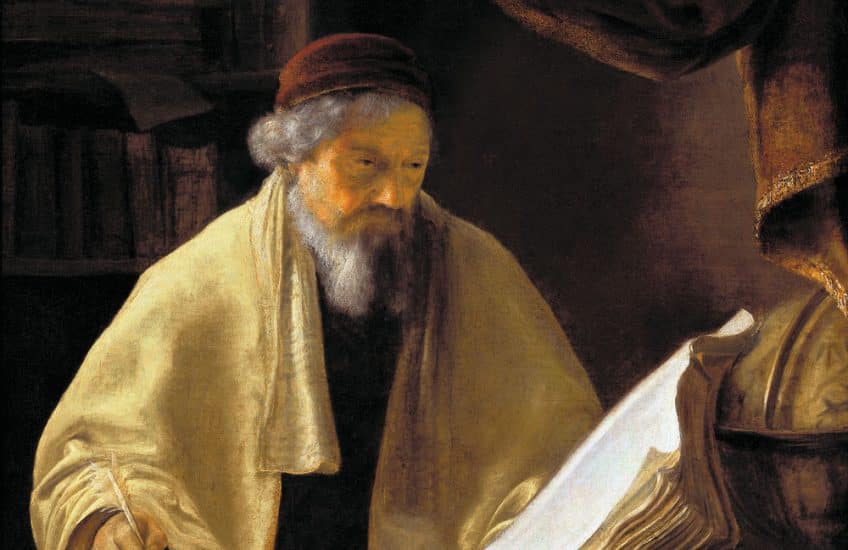
>> Of the three Godfrey Kneller paintings on view in the exhibition, this is the only painting from his earlier period, and that shows a strong connection to the Dutch masters, Rembrandt van Rijn and Ferdinand Bol. Stephanie Dickey, Queen’s Professor and Bader Chair in Northern European Baroque Art, explains.
>> Very little is known about Kneller’s early period. We know he was born in Lubeck in Germany. And he first went to the Netherlands to study mathematics at the University of Leiden, probably intending some kind of a career in something like military engineering. But like many artists do, discovered that their real passion was art. So, in the case of Kneller, in 1662, he left Leiden and went to Amsterdam to study art. And there are different sources from the early period that describe what happened. Some say he worked with Ferdinand Bol. Some say Rembrandt. But by 1662, Rembrandt was in the last stages of his career. And I honestly don’t think he was taking in students who still needed to learn the nuts and bolts. So, it seems to be more likely that he either only worked with Ferdinand Bol, or he started with Bol and then maybe spent a period of time with Rembrandt.
>> Kneller’s Dutch art training with Bol and Rembrandt gave him the skills necessary to masterfully convey his subject’s through art. Bol embraced Rembrandt’s style, and he encouraged Kneller to follow a similar artistic path. The influences of Rembrandt and Bol are seen in the use of colour and handling of paint in Kneller’s A Scholar in His Study.
>> Well, if you think of paintings like ours, the clearest connections are the rich Earthy colours, very warm, ready colour scheme, and strong dramatic effects of light. And those are things that both of them learnt from Rembrandt. You can see Rembrandt’s impact also in some of the painterly touches, for example, in our painting, the gold brocade along the edge of the curtain has a really textural effect, thick paint treated in an almost sculptural way. That’s something that Rembrandt did. That’s something that he taught his students to do, including Bol, and including Kneller. In our painting particularly, the golden robe that the figure is wearing, a very similar robe can be seen in a number of paintings by Kneller, depicting scholarly figures, including one in the National Gallery in London. And the interest in these scholarly figures is also something that they share. It’s mysterious who this figure is exactly meant to be. The costume and the hairstyle are not typical of what a scholar, in contemporary terms, would have been wearing in the 1660s. So, it’s likely that Kneller is trying to make him look like a historical character. He has a large book, kind of dog eared book. He as a globe, which doesn’t necessarily identify him as a geographer. Globes were a mark of learning in generic terms for scholars. Every scholar worth his salt owned a pair of globes in those days, a celestial and a terrestrial globe. You had to have those in your study if you were a scholar of any note. We could also mention that Kneller’s style changed quite radically when he moved to England. He stopped painting in that very textural way. And his colour scheme also changed quite a lot. He pretty much transformed himself into a portraitist. And when he did that, he was deeply impacted by the work of the Flemish painter, Anthony van Dyck, who had also come from the Netherlands to England, but a generation earlier, and had worked for the Court of Charles I. Van Dyck’s impact in England was profound. You can see his impact in English portraits right through to the 18th century to people like Reynolds and Gainsborough. Tastes were changing. Rembrandt’s style was really becoming old fashioned. And a lot of the younger consumers of art wanted something that was more suave and more dignified. And so he really gave them what they wanted.